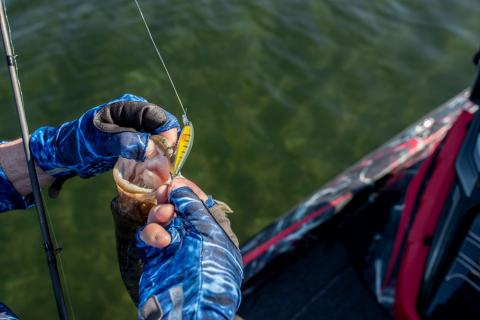Heath Wood
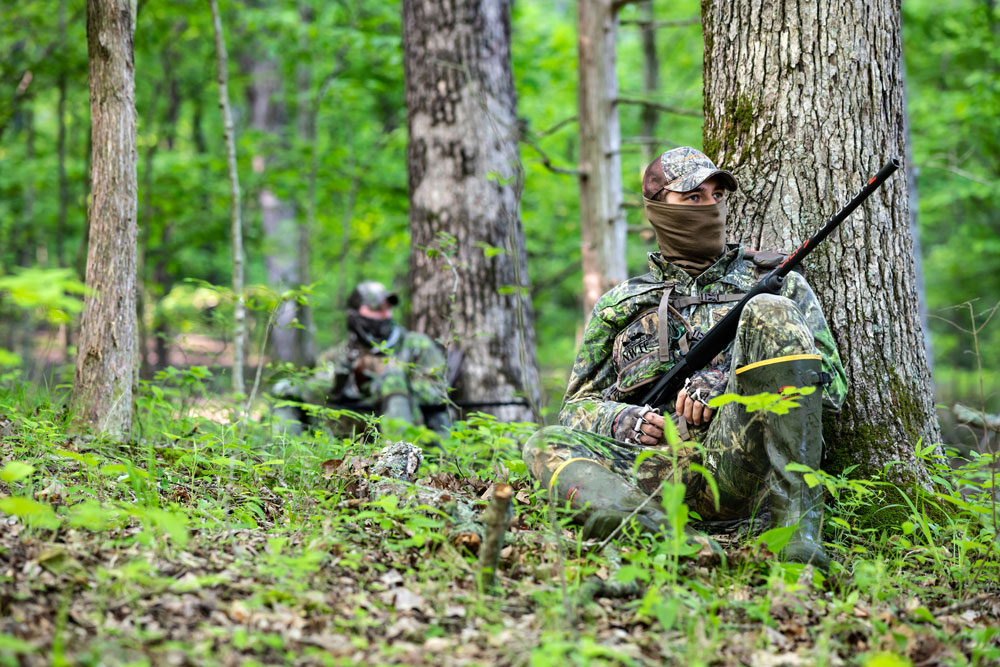
“He was not interested in my calling.”
“He had hens with him.”
“The hens stole him away.”
These are all famous lines from aggravated spring turkey hunters. Unfortunately, on many occasions, the frustration leads to hunters giving up then asking themselves, how can I break away the gobbler from the hens?
The hard-to-call toms or the toms that seem to hang up when responding to a call is often a reminder that in nature, the gobbler is accustomed to the hens coming to him when he gobbles. The natural instinct of the hen going to the tom is the opposite of what most turkey hunters want to see or hear when calling them into shooting range. As a hunter, you must create enough urgency, desire, and jealousy to make the tom want to reverse Mother Natures’ rules and bring him in on a string.
Here are three proven tactics that hunters can use to break even the most love-struck toms away from turkey hunting’s most significant gobbler detour, the hens.
Get Them Curious
One of the most common mistakes turkey hunters make is over-calling. It is common for hunters to ask themselves why he was answering every call, then suddenly, with the snap of a finger, he got quiet and left with the hen.
Every call you make when trying to call in a tom is letting him know your exact location. If you have been randomly calling every minute or two for the last 30 minutes, in his mind, he thinks that the hen he is hearing is interested and not going anywhere. Meanwhile, hens close by are naturally going to the tom while knowing that the other hen sounds they hear haven’t moved any closer. She can ease in without making a sound because she doesn’t need to. The tom has been answering your call each time, giving the hen an exact location where the tom is until she gets within sight of him and steals him away.
Instead of risking your gobbler being stolen away by a silent hen, one must make a tom curious. Once your calling has got the attention of a gobbler, and he has committed to come your way, begin calling less often. He no longer knows your exact location, and his curiosity gets the best of him. Meanwhile, he will continue to gobble, trying to get you to call again. The reverse psychology here is that the hens are going to go to him. When you are in the correct position, you can call a few times to show interest again. By now, he knows where his hens are. He will bring them along to come to check you out or leave them entirely to return later. Either way, the head games you have created will most likely result in you getting the shot.
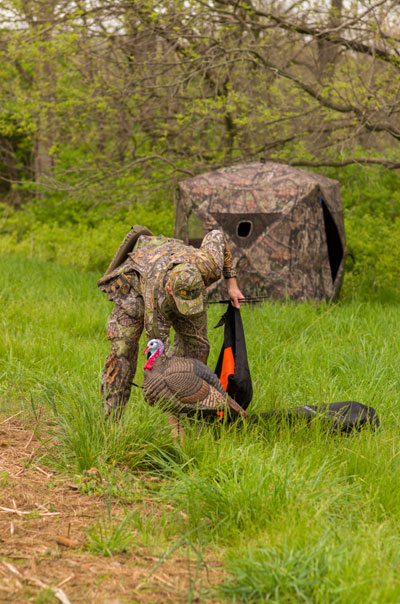 Breeding Decoy Setup
Breeding Decoy Setup
One of the best ways to create enough jealousy and urgency to break away a tom from his harem of hens is by visually showing him that he will be too late if he doesn’t come precisely at that moment.
Start by using a jake decoy along with a hen decoy placed in the breeding position. With a jake decoy placed directly over her, you are now giving the tom confirmation that the sounds you have been making while calling were that of a real hen, and a young, immature jake is about to breed his hen before he does. The hen/jake decoy combination is more than the gobbler can stand, and he will respond by coming fast, ready to fight the immature jake.
When your decoys are placed within approximately 20 yards, you are in the perfect shooting range when he is at the decoys.
One of my favorite locations to use this setup is in open areas such as food plots, pastures, or crop fields. Open areas like these give turkeys a better chance of seeing the decoys from a distance. It is natural for toms to head to these areas during late mornings or midday to strut and show off for hens. By adding a breeding scenario with your decoys, the toms are likely to take the bait.
Use Multiple Calls
As mentioned earlier, a great way to distract a tom away from a nearby hen that is hanging around is to build his curiosity and desire to want to come to check you out. The best way I can explain this tactic is to refer to a single guy on spring break at the beach. The guy is talking to a pretty girl; not much will get his attention away from her unless there are three or four pretty girls off in the distance that are stirring up some noise. He will become curious and think he can better his chances by joining the crowd of girls.
The same goes for a gobbler seeking out hens. If the gobbler is hanging around with a hen, then hears the sound of two or three hens hanging out together, he will get curious and leave the hen to better his chances.
I am guilty of being one of those turkey hunters who have several different calls in their vest while hunting. When I have a tom who will not leave a hen, I am thankful that I can make different calls.
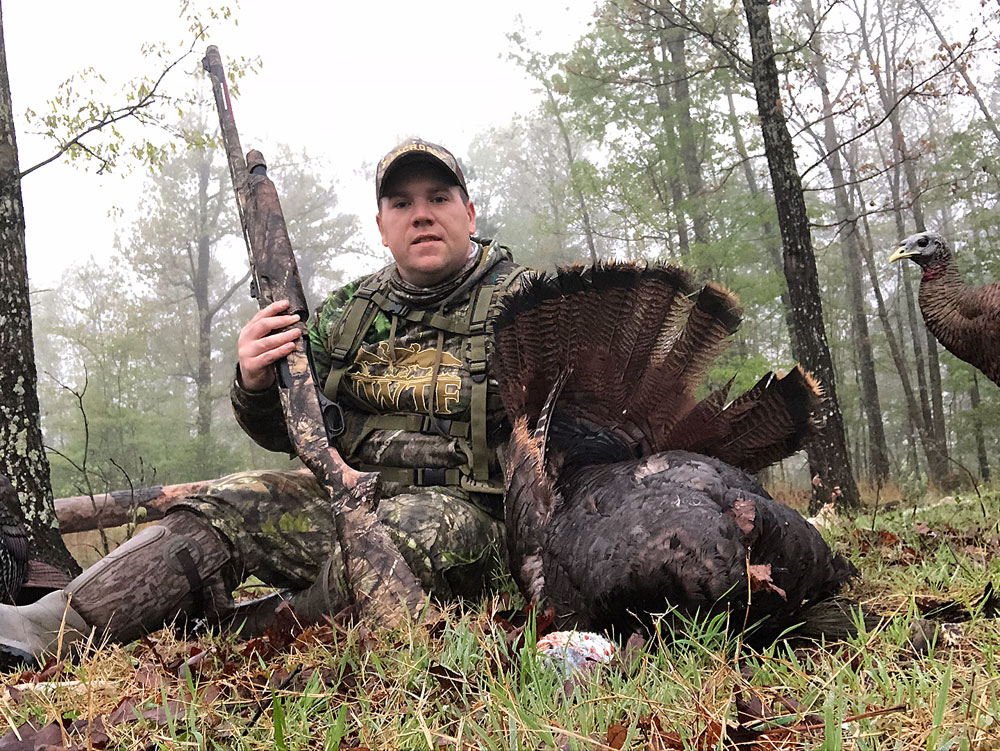
When hunting, I carry a case like the H.S. Strut magnetic Mouth Call Case, capable of holding eight different types of diaphragm calls. While trying to get a gobbler’s attention, I may use two or three different types of diaphragms at different times to mimic a group of hens hanging together. I also use a slate call in conjunction with the diaphragms until they get into close range. Then, I solely use the diaphragms to prevent being picked off by making any movement.
Another great way to sound like more than one hen is to bring a hunting partner along to help call. Placing another hunter a few yards behind you, then rotating back and forth between calling, gives a realistic sound to a gobbler’s ears.
Using multiple calls to sound like more than one hen can also get other hens’ attention that is close by a tom. On many occasions, sounding like different hens calling back to each other sparks the hens’ dominance. When the hen breaks away from the gobbler to come to join the scuffle, the tom is usually not too far behind, bringing him into range.
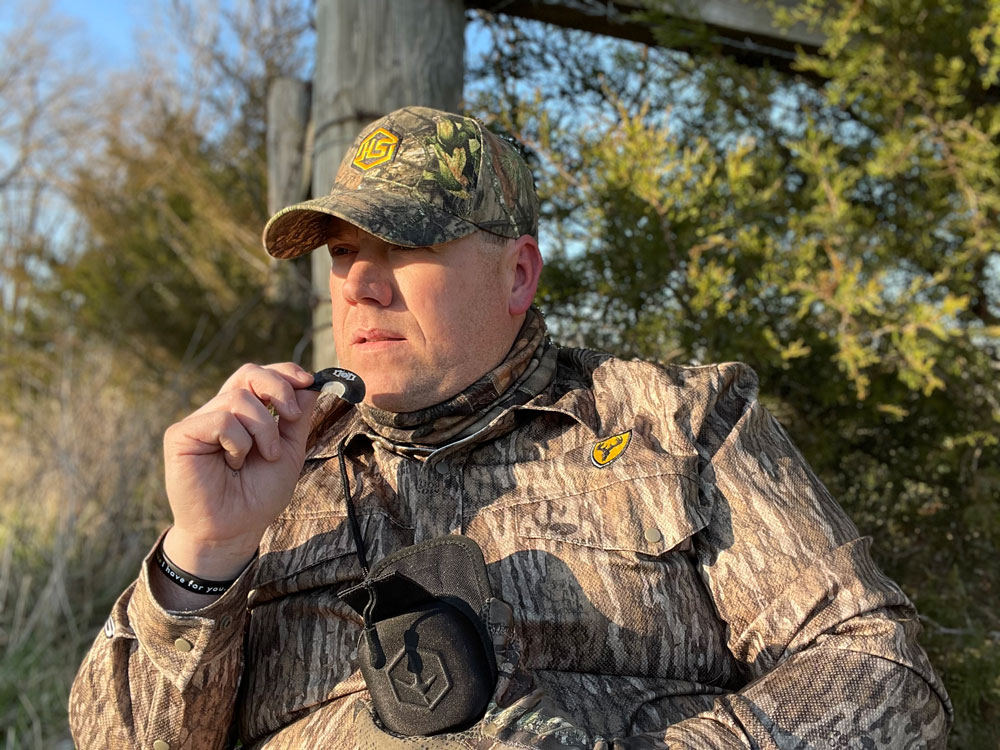
In most instances, Mother Nature typically wins. However, by pulling a few tricks and calls out of their vest, Mother Nature may have to take a back seat to a dedicated turkey hunter who is willing to put in the time and effort to bag a lovestruck tom.

 Breeding Decoy Setup
Breeding Decoy Setup












